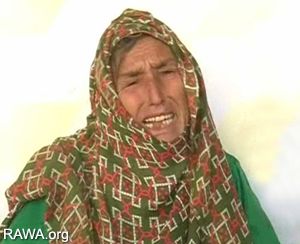PUL-E-KHUMRI, Afghanistan - The disarmament of Afghanistan's illegal private militias has ground to a halt and the price of weapons in the country's relatively quiet north is skyrocketing — a sign of the embattled central government's failure to assert its control, Afghan and Western officials say.
This mountainous, ethnically diverse region has been spared the intense violence in the past year that has rocked the south and the east, where the Taliban has staged a violent comeback, launching scores of suicide bombings and brazen guerrilla attacks on Afghan, U.S. and NATO forces.
But the relative calm has not helped President Hamid Karzai's government extend its influence here, despite the presence of NATO security forces.
"No (provincial) governor has stayed for more than three or four months in the job because there are powerful people and networks" who force them out, said Habibullah, a car mechanic in Pul-e-Khumri, the provincial capital of Baghlan, where the top Kabul-appointed administrator was replaced three times during 2006.

The Northern Alliance use young boys as fighters.
Ethnic Tajik and Uzbek warlords from the Northern Alliance that helped the U.S. defeat the hardline Taliban regime still dominate and local citizens are increasingly seeking guns for self-protection because of rampant criminality and distrust of the police, residents say.
The price of a Russian-made AK-47 assault rifle has risen in the past three years from $100 to $400, officials and local commanders said.
"The price of weapons is going up as the people do not trust police, government or the army ... to protect them against thieves, terrorism, crime," former northern strongman Alhaj Abdul Malek said at his privately guarded compound in the northern town of Mazar-e-Sharif.
"Everybody is looking after themselves," said Malek, who today heads Afghanistan's Liberty Party.
After the ouster of the Taliban regime for harboring al-Qaida, Western donors led by Japan spent $141 million to demobilize 63,000 out of an estimated 100,000 former militia fighters — most from the Northern Alliance.
That was supposed to support a parallel effort to build a strong national army and police force.
About half of the disarmed militia fighters entered the mainstream, many becoming farmers, but many others kept their weapons.
2,000 illegal armed groups active
A subsequent U.N.-Afghan effort then was launched to disarm and disband illegal armed groups with up to 120,000 members involved in crime, extortion and drug smuggling.
That effort has foundered.
Some 2,000 illegal armed groups — each with at least five fighters — remain active, including new groups that have popped up across the country, said Ahmad Jan Nawzadi, a spokesman for the disarmament program. It originally hoped to disarm all fighters by the end of 2007.
"As the security environment in the country, particularly in the south, began to deteriorate the whole process of voluntary weapons handovers ... began to grind to a halt," said a Western official involved in the process who would only speak on condition of anonymity due to the sensitive nature of the subject.
That has worrying implications for the Western-backed project to rebuild a country scarred by the civil war between rival mujahedeen factions that broke out after the Soviet occupation in the 1980s.
The Western official said the Taliban resurgence and government drive to establish an 11,000-strong auxiliary police force among Pashtun tribal militias in the south to combat the Taliban has generated suspicion among Northern Alliance factions who fear being outgunned by their tribal rivals.
Karzai's influence blunted
A new report by the Center for Strategic and International Studies, based on more than 1,000 interviews with Afghans and 200 experts, says that northern militia commanders who took part in the initial disarmament drive have begun to rearm, and former warlords retain de facto control, blunting Karzai's influence in the region.

Gulsha, suffering mother of 11-year-old Sanuba who accuses Malom Zafar (district chief) and Commander Mehmood, a local warlord, for kidnapping her daughter who later was exchanged for a dog in North of Afghanistan. (RAWA photo)
Movie Clip of Gulsha | RAWA report
Mohammad Zamir, a 25-year-old shopkeeper, said people in Baghlan dare not go out after nightfall.
"Even in my house I have weapons to ensure the security and dignity of my family," Zamir said.
But rising weapons prices in the north, where there are large arms stockpiles left over from the civil war, are not just stimulated by local demand.
Arms dealers are "buying and smuggling to the Taliban areas in the south," according Bashir Khan Baghlani, a former senior commander of the Islamist militant group Hezb-i-Islami.
"These smugglers buy from the locals, put them in their vehicles and pay off the corrupt local police, who turn a blind eye to the trade," Baghlani said.
Western officials confirm that trend, which presents a threat to the 47,000 U.S.-led coalition and NATO forces that are bracing for a surge in Taliban attacks this spring. Thousands of people were killed in violence last year that shook confidence in Karzai's weak government.
"The north is a place from where the weapons go to the south," said 1st Lt. Laslo Tor, safety and security adviser to the Hungarian Provincial Reconstruction Team in Baghlan province.



